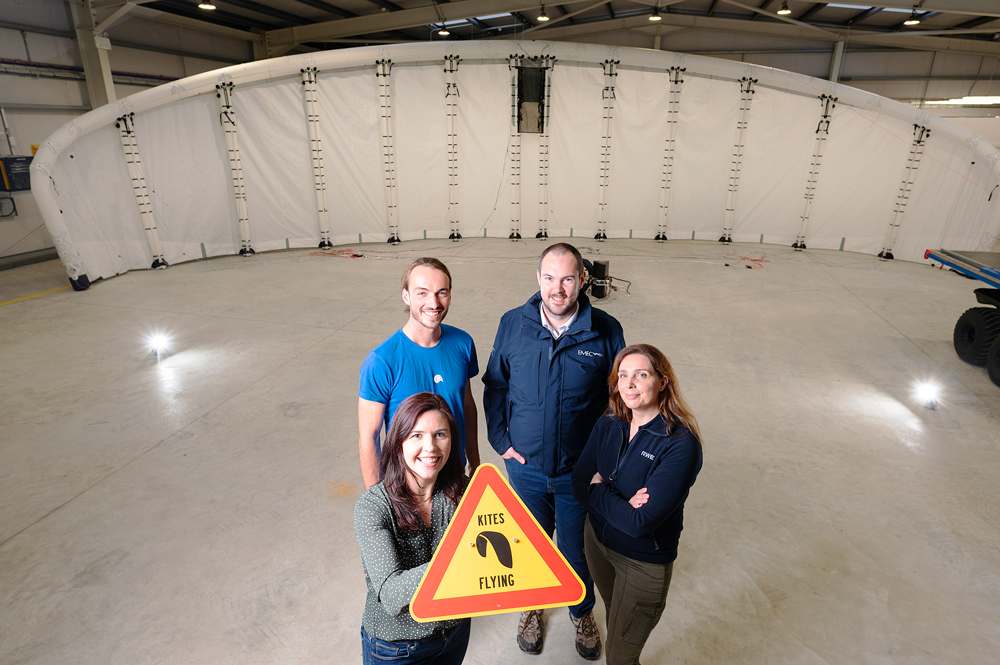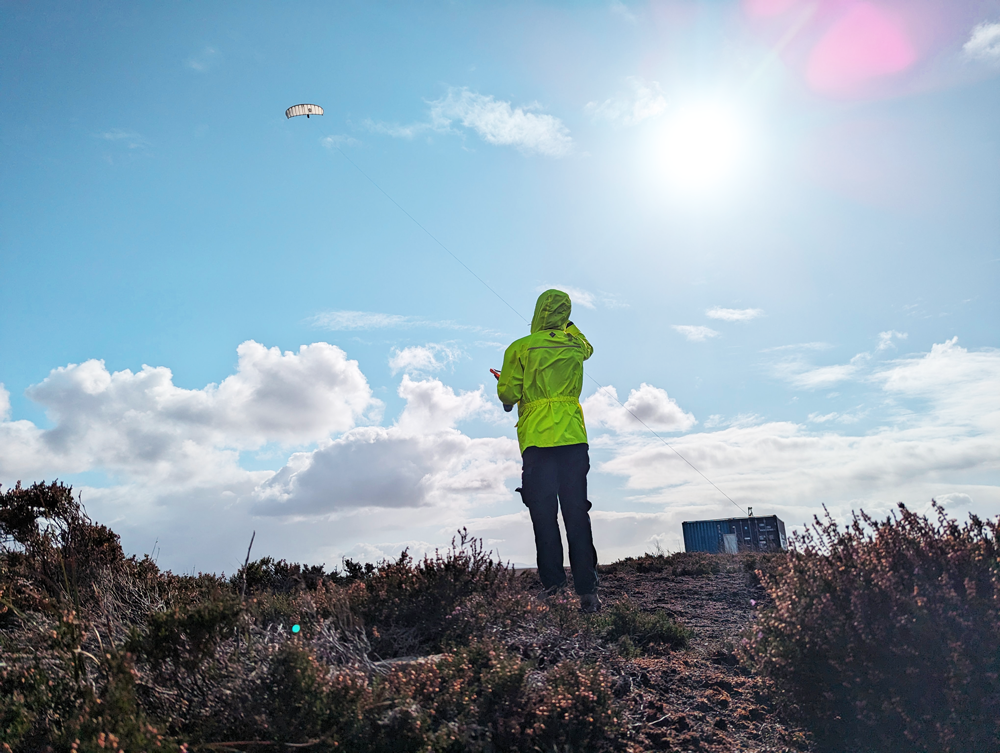Airborne Wind Energy takes flight in Mayo
Share
[Source: BlueWise Marine]
MIIN member BlueWise Marine and Mayo County Council are two of the partners involved in the first-ever industry test hub for Airborne Wind Energy (AWE) launched in Ireland, boosting development for a new class of renewables.
The MegaAWE project partners are pleased to announce the inauguration of the first-ever industry test hub for Airborne Wind Energy (AWE) in Bangor Erris, County Mayo. Test flights are scheduled to commence in September 2023.
MegaAWE, maturing utility-scale airborne wind energy towards commercialization, represents a cross-sector effort aimed to increase technology readiness levels of airborne wind energy. The project was led by Mayo County Council, a local authority in Ireland, and supported through the Interreg North-West Europe Programme.
The existing renewable energy technologies are projected to plateau in emission reduction capabilities by the end of this decade. To reach net-zero beyond 2030, we must rapidly develop and expand diverse renewable energy solutions.
Airborne Wind Energy Systems (AWEs) is a new type of wind energy technology. These systems harness the power of high-altitude wind using flying energy generators, such as kites, gliders and drones. By tapping into an otherwise inaccessible wind resource, AWE complements solar and traditional wind energy and can be deployed in remote areas, offshore as well as off-grid.
The new test hub will facilitate continuous operation of AWE devices, enabling data generation critical for product development and industry standardization. This support is instrumental in advancing this renewable energy innovation to the commercial stage.
“Mayo County Council’s support for the airborne wind energy test hub reflects our commitment to sustainable energy and innovation. The MegaAWE project partnership aligns with our vision for a cleaner, more prosperous future, emphasizing international cross-sector collaboration to achieve it. We are excited about supporting this transformative industry,” said Pat McHale, Senior Executive Engineer at Mayo County Council and a Project Lead for MegaAWE.
RWE Renewables, one of the largest global players in renewable energy, lead the construction and permitting process for the test hub, with Kitepower as a partner, marking the first AWE developer to test at the site. The site in Bangor Erris was chosen after an extensive global search for a suitable location to develop airborne wind technology. Planning permission was granted earlier this year, allowing the Kitepower device to take flight.
Speaking at the announcement Cathal Hennessy, Head of RWE’s Onshore Renewables Development (Wind, Solar and Storage) UK & Ireland said: “We are delighted that RWE Ireland is helping to develop this new wind energy technology with our partner Kitepower. We believe airborne wind technology, once it reaches commercial size, could have a strong impact on the growth of the wind energy sector, and would be an important technology for RWE, complementing our existing renewables portfolio of wind, solar energy and battery storage. With low capital expenditure and less materials, airborne wind could have an important role in helping drive down the cost of energy further.”
Kitepower, a spin-off from Delft University of Technology, has been operating on a number of temporary test locations over the past few years. The new test hub in Bangor Erris will be a permanent test base for Kitepower. It allows the company to accelerate development of its system with continuous testing to the benefit of the entire sector.
Johannes Peschel, CEO Kitepower, comments: “We are extremely proud that we have been able to co-create this test hub to advance airborne wind energy, an entirely new class of renewables. This was only made possible with the strong support of Interreg North-West Europe and all partners contributing to the MegaAWE project. It clearly demonstrates that investing in renewables is strategic and that we are stronger together. We expect the test hub to help advance our market by maturing airborne wind energy. We are dedicated to realising a clean energy future.”
Kitepower’s Falcon soft-wing device can generate up to 100kW of power, providing sufficient energy for approximately 150 households consuming 3000 kWh/year. This device comprises an inflatable membrane wing with a reinforced tubular frame, a kite control unit, a ground station generator, and a tether connecting the kite to the ground station. Electricity is generated at the ground station through the conversion of mechanical energy from the kite.
The site underwent two years of rigorous environmental studies to minimize its impact on the surrounding area, ensuring compliance with planning and environmental regulations. Additionally, Kitepower secured a cross-border permit for unmanned aircraft systems (UAS) and temporary restricted airspace (TRA), setting a significant precedent for integrated cross-country regulation within the EU.
The MegaAWE project is a collaboration between researchers, renewable energy industry companies, developers, and supply chain actors, as well as local authorities in Ireland and France.
The communications for the MegaAWE Project was lead by the BlueWise Marine.

